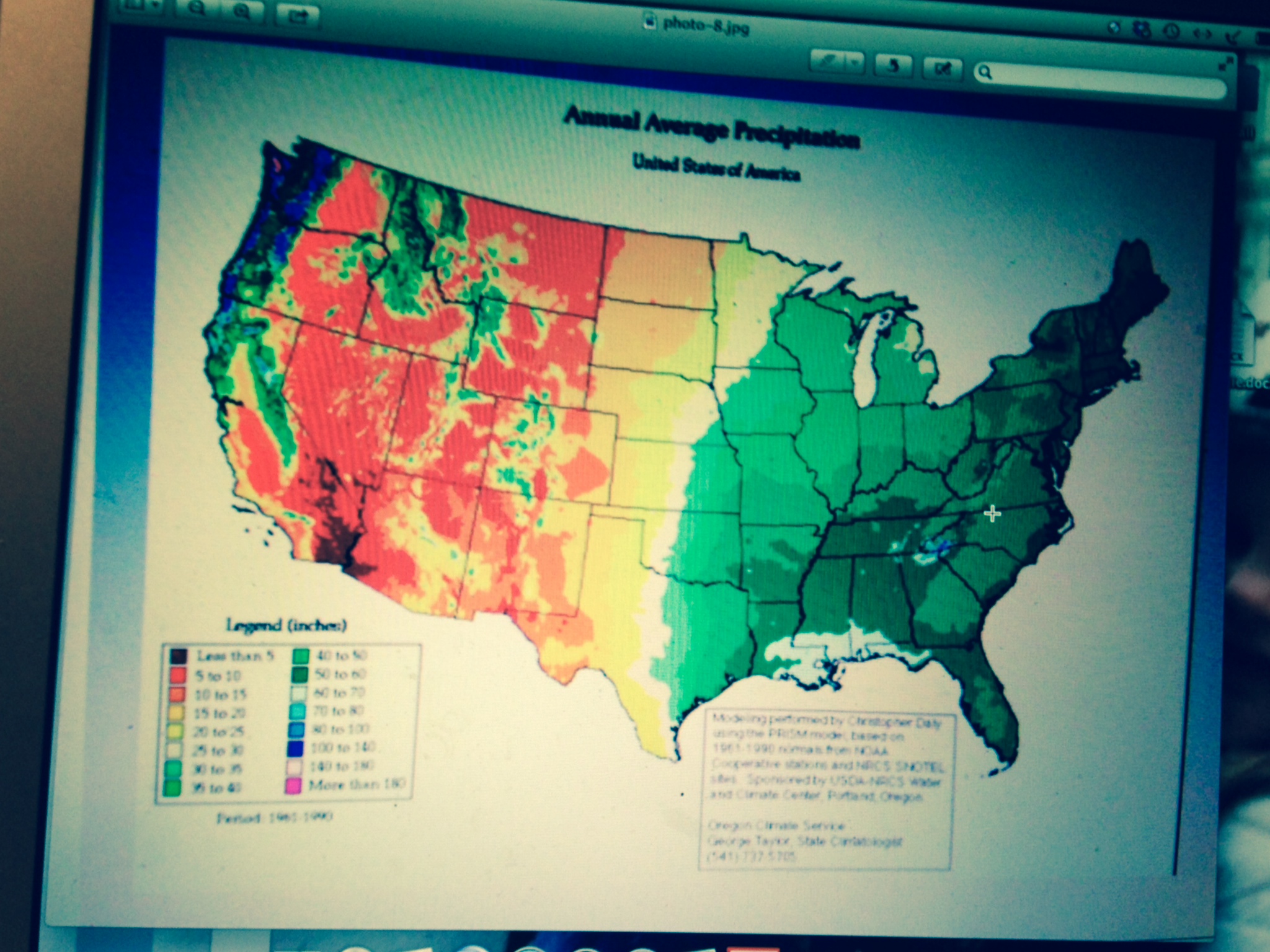Nor Any Drop to Drink
Here is all you really need to know about this winter’s meteorological divide between the inundated East and the parched West: 
The map shows a line just east of the 100th meridian that divides America into a wet half and a dry half, a map that has remained essentially unchanged since Americans began aggressively settling the west 150 years ago. John Wesley Powell, who navigated the Colorado River despite having lost his right arm at Shiloh, argued then that the West was far too dry for intensive development. But his prescient words were drowned out by Charles Dana Wilber’s crackpot theory that “rain follows the plow.”
And so, in southeast Nevada, which gets 4.2 inches of rain a year, we built the sprawling city of Las Vegas, home to two million people and endless fountains. And in California, where the worst drought in memory threatens drinking water supplies and agricultural production, we have created in the desert of the San Joaquin Valley “one of the world’s most productive agricultural regions” by extracting so much groundwater that the land itself is sinking.
Through a long history of damming, drilling, diversions, and water grabs, we have dried up the West’s rivers and extracted its ground water at rates that, it’s now clear, are unsustainable. Over the years, prophets have tried to tell us so – Wallace Stegner in Beyond the Hundredth Meridian (1954), John McPhee in Encounters with the Archdruid (1977), and Marc Reisner in Cadillac Desert (1993) – but we didn’t listen.